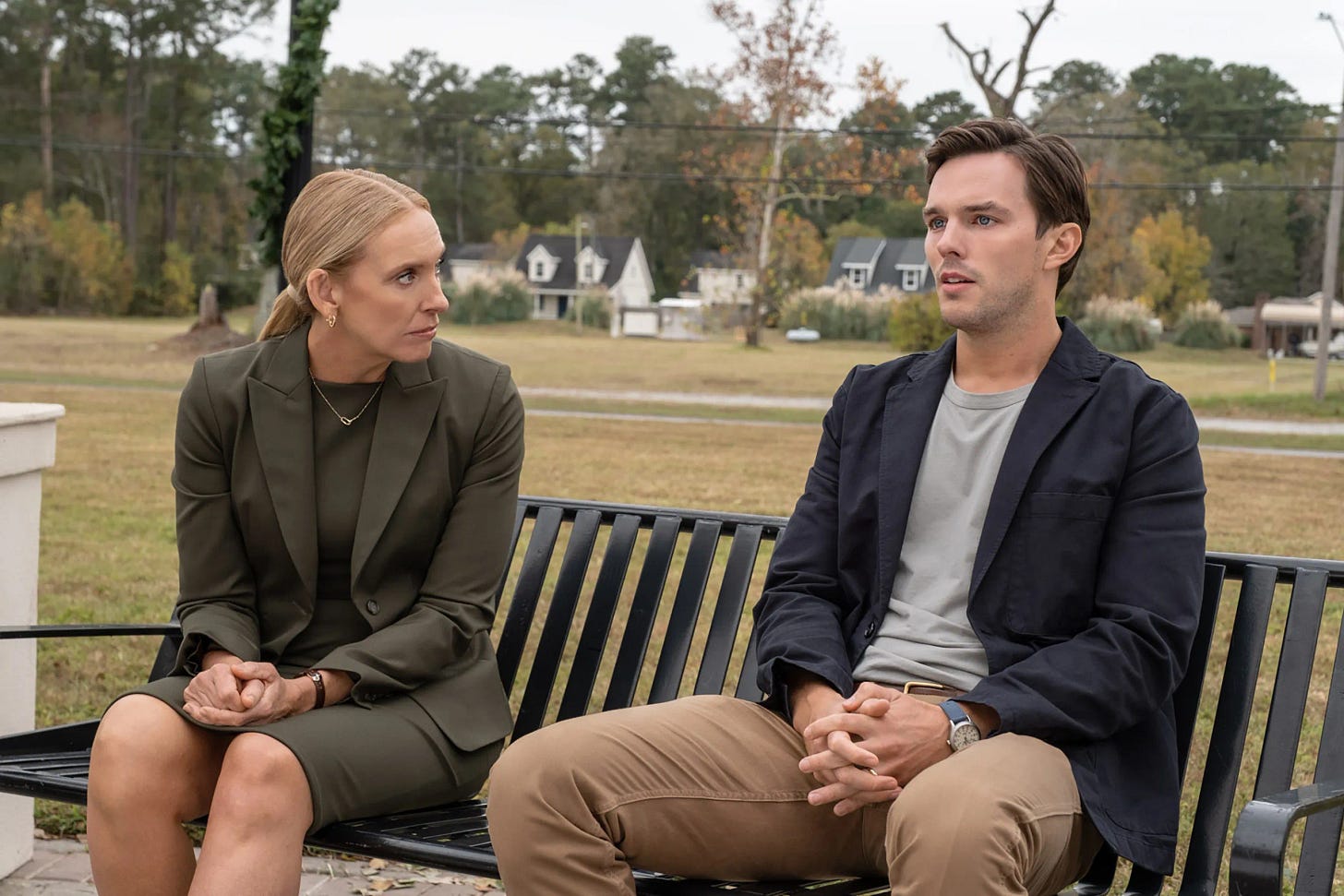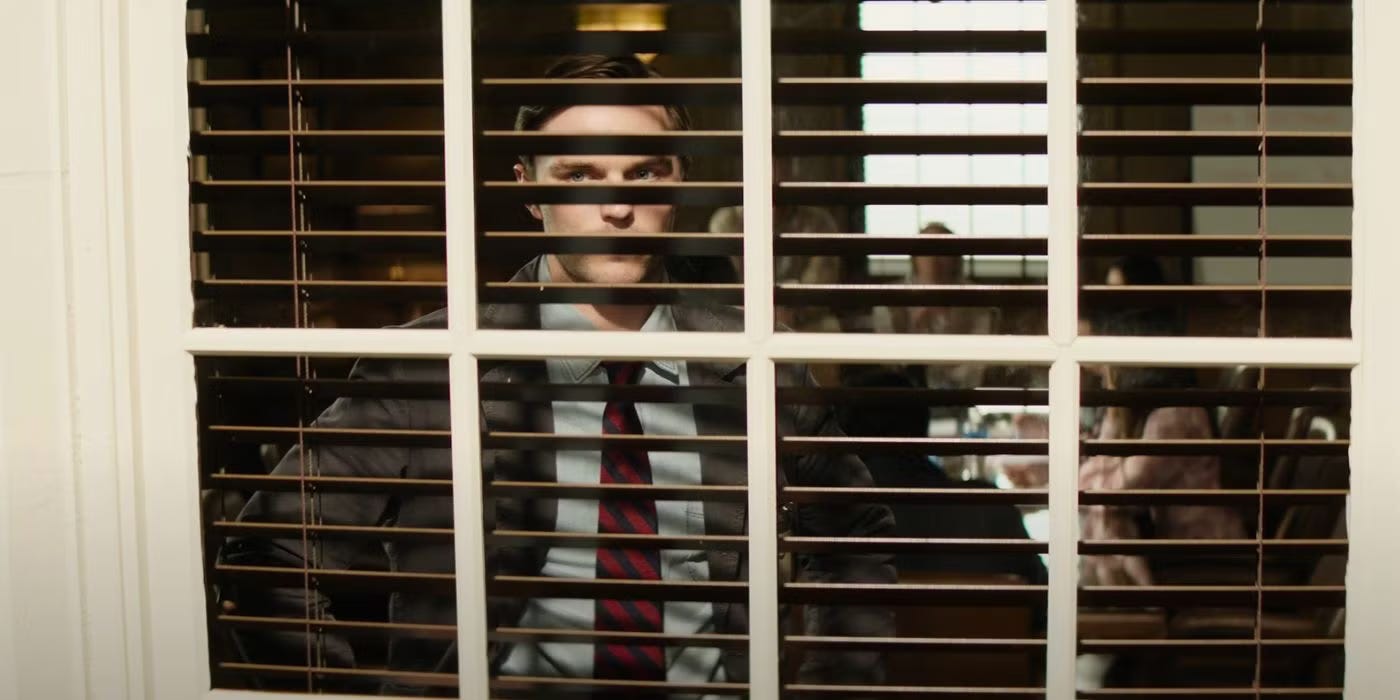Review - Juror #2
A gripping story of conflicts of interest, morality and the soul of the American legal system. One of Eastwood's best.
In my last post of the year, I wanted to take the time to write about one of the films that has impacted me the most and provoked the most discussion, the latest from Clint Eastwood (who is about 94 years old): Juror #2.
I still have some films yet to see from 2024 before publishing my official ranking. If those films are made available on time, I’ll write my list by the end of January. Until then, this next month is filled with new releases in theaters, so there will be lots to write about.
Truth and Justice: Clint Eastwood’s Juror #2
Production from the United States. Released in 2024.
The courtroom drama has many times been the conduit to explore more interesting subjects. Sometimes, it is about the nature of relationships as in Anatomy of a Fall and to some extent, Kramer vs. Kramer; other times it explores issues of social justice to varying degrees of success, as in To Kill a Mockingbird, Philadelphia and The Trial of the Chicago Seven. However, the films of this kind that fascinate me the most are those concerned with the relationship between legal institutions and morality. One of the very best legal dramas, Otto Preminger’s Anatomy of a Murder, eschews morality altogether and makes the viewer focus on how each character uses the law to their favor to seek success for its own sake. While having a darker ending, this film ultimately serves as a triumphant statement of American institutions and the competence of small-town legal professionals when arguing their case. Another classic film, Sidney Lumet’s 12 Angry Men, is unconcerned with the letter of the law and states a positive case for common American archetypes as moral for seeking the truth and justice through their own means. Both films are tonally different but favor the presumption of innocence as the ultimate guarantee afforded to the people under the law.
And then there’s Clint Eastwood, a person who as an actor represented many of those classic American archetypes, mainly in westerns. As a director, however, he challenged those perceptions of American heroes, most famously through his most celebrated film Unforgiven, where he played a former outlaw battling his demons. His skepticism is pretty clear when, in the climactic scene, the overwhelming violence in the name of ‘justice’ is horrifying rather than triumphant. That same skepticism is clear in his most recent film Juror #2 -which is also one of my favorites of his work- where conflicts of interest prevail and people’s decisions have self-serving motives.
Juror #2 follows Justin Kemp (played by Nicholas Hoult), a married man with past demons and a baby on the way who is summoned to jury duty, and realizes that he may have had a role in the crime he is being asked to decide about. His main foil is Faith Killebrew (played by Toni Collette), a prosecutor running for district attorney who is using the case to win the campaign. There are many more well known actors, like Zoey Deutch (Justin’s pregnant wife), Chris Messina (the public defender assigned to the case), J.K. Simmons, Leslie Bibb and Cedric Yarbrough (relevant jurors) and Kiefer Sutherland (a close friend of Justin and a lawyer), all who play important roles, but ultimately the center of the story is the unlikely contrast between Justin and Faith, which challenges our own expectations of what American institutions ‘should’ protect while pulling out the rug from under us.
Of course, the main moral question for Justin is: Does he save himself from possible legal trouble or does he help declare the suspect not guilty in what first seems to be a clear guilty verdict? Is it possible for him to do both? From the very beginning, Eastwood and writer Jonathan Abrams lead the viewer into sympathizing with Justin, both in his growing family, his genuine love for his wife and his recovery from addiction. And when he realizes that he may have been a perpetrator, his first instinct is to know what would happen if he confesses to clear the defendant’s name. Faith, on the other hand, is presented initially as more sinister, not because she is doing anything particularly wrong, but because she is leveraging what seems to be a terrible domestic violence case into an election victory, which might not sit well with some.
Yet, the rest of the film seems to challenge this perception while making the audience question their own allegiances to each. For Justin, guilt was only a luxury he could feel once he was out of trouble. The rest of the time he is in self-preserving mode, sometimes with tragic consequences. Some may justify him for saying that his eventual sentencing would be too harsh, and he has a family to take care of… but does that free him from what he did. If he did indeed commit a crime, even if it was an accident, doesn’t he deserve to respond for his actions? Should he get a more lenient sentence? If he takes advantage of his position as a juror, doesn’t it make him worse? Those were the kinds of questions the film raised all throughout its runtime, and especially in its closing minutes. And for Faith, the rest of the film explored her inner conflict as she realizes that she might have gotten the case wrong. Of course, being a public official running for office means compromising at least for what the electorate wants, but couldn’t the need to seek office conflict with the truth or justice? Those are the kinds of questions presented to her.
As for the rest of the characters, all have conflicts of interest, but they don’t even realize it. The forewoman wants to reach a decision at any cost to feel like she achieved something after two mistrials, one of the jurors uses her own expertise to aid the debate but exalting herself in the process, and one juror sees this case as a personal one, as the defendant is known to be a part of a gang that tragically ended his brother’s life years ago. Each has reasons to participate and decide not fully within the limitations that the legal system sets out, making the viewer question its validity. Even Simmons’ character, who seems especially qualified to investigate, says plainly that his duty as an official goes in conflict with his duty as a juror. In the end, all of them have reasons to be there, but none of them are the right reasons.
In the end, through his toned down classic style of quick cuts, Eastwood paints a wide enough canvas of a justice system riddled with flaws and conflicts, and one where the objectives seem to be to protect an image of American exceptionalism and family, even if the truth tells a different story. One character says that sometimes, the truth isn’t justice. And while Eastwood asks many questions throughout the film, this one has a clear answer. Those who use this argument are ultimately self-interested. The ending, though dour, is ultimately hopeful of what the right people can accomplish if they choose to do the right thing. With so many incentives to do the wrong thing, those people are the true heroes.







